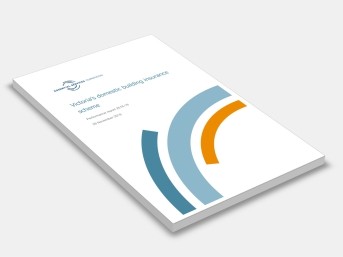Victoria’s domestic building insurance scheme: Performance report 2018-19
Essential Services Commission
Contents:
Summary
Insurers may have incurred some DBI losses
Most registered builders seek eligibility with the Victorian Managed Insurance Authority
The number of project certificates has increased
The average premium per $1,000 of project value has decreased
Claims are made infrequently
The number of owner-builder policies has decreased
1: Introduction
1.1: What have we been asked to do?
1.2: What is domestic building insurance?
1.3: The development of domestic building insurance
1.4: What are the requirements for builders to be eligible for domestic building insurance?
1.5: How are home-owners covered by domestic building insurance?
2: Scheme performance
2.1: We assume a seven year lag in assessing scheme sufficiency
2.2: Insurers may have incurred DBI losses from 2007 to 2010
3: Eligibility, project certificates and premiums
3.1: Most registered builders seek eligibility with the Victorian Managed Insurance Authority
3.2: The number of project certificates has increased
3.3: The average premium has decreased
4: Project certificate claims
4.1: How are domestic building insurance claims made?
4.2: Most domestic building insurance claims are accepted
4.3: Most claims due to builder insolvency and structural defect
4.4: Claims are made infrequently
4.5: The average cost of claims
4.6: The average turnaround time for accepted claims is 14 months
4.7: Most common reason for claims denied are fault not deemed a defect or builder not
insolvent
5: Owner-builder policies, premiums and claims
5.1: Which owner-builders require domestic building insurance?
5.2: The number of owner-builder policies issued has decreased
5.3: The average premium is higher for owner-builders than registered builders
5.4: Owner builder claims
Glossary
Appendix A: terms of reference
